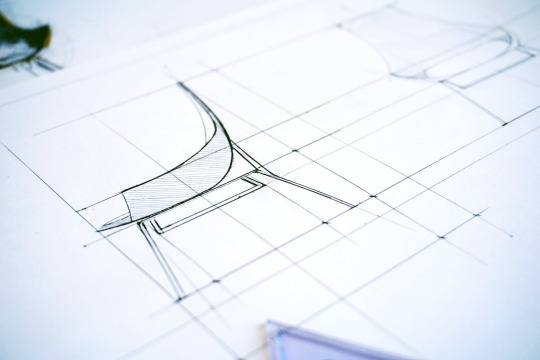Max Compose provide photograph for blog, website and printing purpose. Max Compose is a photo stock website.
Don't wanna be here? Send us removal request.
Text
Article Marketing: How to Make It Work for You

Article marketing is the process of creating articles that are related to your business or website and submitting them to article directories. These articles can include a link back to your website, which can help improve your website's search engine ranking and drive traffic to your site.
To make article marketing work for you, start by finding an appropriate directory for your industry. Once you've found a few good options, submit your articles to these directories. Be sure to include a link back to your website in each article so that readers can find your site easily.
Over time, as more and more people read and share your articles, you'll see an increase in traffic and potential customers. Keep writing quality content and promoting your articles regularly, and you'll soon see the benefits of this powerful marketing tool.
The benefits of article marketing
As a business owner, you know that marketing is essential to the success of your company. You’ve likely tried a variety of marketing techniques, but have you considered article marketing?
Article marketing can be an extremely effective way to promote your business and it has a number of benefits.
When you use article marketing, you are writing articles that are related to your product or service and then submitting them to article directories. This gets your articles in front of potential customers who may not have otherwise been exposed to your business.
As they read your articles, they will get to know, like, and trust you and when they are ready to make a purchase, they are more likely to choose your company over a competitor.
Article marketing is also very cost-effective. Unlike paid advertising, which can be expensive, article marketing is a relatively inexpensive way to reach new customers.
How to get started with article marketing
Article marketing can be an effective way to generate traffic and interest in your products or services. But where do you start? Here are a few tips to get you started with article marketing:
1. Start by creating a list of topics that would be relevant to your target audience. What questions do they have that you can answer? What information would be helpful to them?
2. Once you have a list of potential topics, start writing! Write articles that are informative and well-written, and make sure to include a call-to-action at the end of each one.
3. Once you have a few articles written, start promoting them through social media, your website, and any other channels you have available. Make sure to link back to your articles from all of your promotional materials.
4. Continue to add articles to your site, and continue promoting them. When you start seeing a few visitors coming in, you will know that you have launched your content marketing campaign successfully!
Tips for making article marketing work for you
When it comes to marketing your business, there are a lot of options to choose from. But if you want to make the most out of your time and effort, article marketing is a great way to go. Here are some tips on how to make it work for you:
1) Keep your articles concise and to the point. No one wants to read a long, rambling article. Get straight to the point and give readers the information they need in a clear and concise way.
2) Use keyword-rich titles that will grab attention. Your title should be reflective of the main theme in your article so that readers know what they can expect. At the same time, use keywords that people will actually search for so that your article comes up in search engine results.
3) Promote your articles through social media and other channels. The more people who visit your article, the more likely it is that you will get a new subscriber.
4) Treat your content as an asset. You can publish your articles on other websites and share them on social media channels. The more exposure your article gets, the more likely people will be to subscribe to your list.
As you can see, there are a number of different ways that you can promote your email list and gain subscribers. Which method works best for you?
Conclusion
When it comes to article marketing, the most important thing is to produce quality content that will resonate with your target audience. While there are a number of ways to promote your articles, the most effective approach is to focus on building relationships with key influencers in your industry.
By taking the time to connect with these thought leaders, you'll be able to position yourself as a credible source of information and drive traffic back to your website or blog.
While it may take some time to see results from your article marketing efforts, the long-term benefits can be well worth the investment.
By consistently producing quality content and promoting it through key channels, you'll be able to build a loyal following of readers who will return to your site again and again.
Article marketing is an unavoidable marketing strategy for your business. Hope this will help you to grow your business. Please share it if you like it, I'd appreciate it. Don't be shy to leave me a comment, thank you for reading.
0 notes
Text
Freelance graphic designer increase 110% efficiency in 14 days
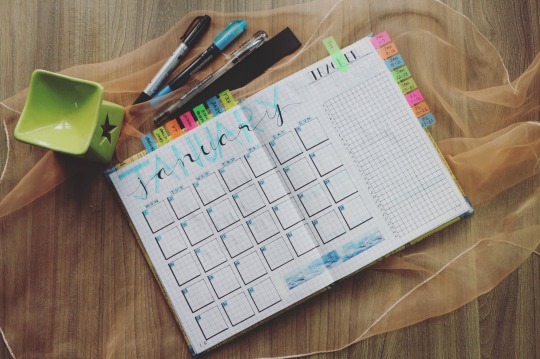
Freelance graphic designers produce a wide range of creative work for their clients, often working on tight deadlines. In order to be as efficient as possible, it is important for freelance graphic designer to develop good work habits and use the right system. In this article, I will show you the “Freelance Organizer System” for increasing your efficiency as a freelance graphic designer.
The Challenge of a freelance graphic designer
The freelance graphic designer has always been seen as a challenge to the industry. It is a career that is filled with many unknowns and can be very difficult to break into. The freelance graphic designer often has to be their own boss, marketing expert, and accountant. They must also be able to manage their time efficiently and meet deadlines. Let’s see all the challenges:
No one knows you
No good portfolio to show the potential client
Good design but not impactful
Good design but not customer reject
The customer does not return back
More freedom but does have the private time
Is that the problem you are facing now? So am I. But after I use the freelance organizer system, all the above issues were clear, and now I even have time to write blog posts.
I introduce this system to all my freelancer friends and they use this not only to improve their life quality but also to have more time to stay with family.
Let’s discover how this easy system helps your life.
Continue read Freelance graphic designer increase 110% efficiency in 14 days
0 notes
Text
How to create a brand identity that stands out?

How to create a brand identity that stands out from the competition
A brand identity is the visual representation of a company or product. It should be memorable, consistent, and differentiated from the competition. Creating a brand identity that stands out from the competition can be difficult, but it's important to do if you want to attract customers and keep them loyal.
What is a brand identity, and why is it important?
A brand identity is more than just a name and a logo. It's the personality of your business, and it's what sets you apart from your competition. A strong brand identity can help you attract new customers and keep them coming back for more. It can also help you build trust and credibility with your target audience. If you want to create a strong brand identity for your business, it's important to start by defining who your target audience is. If you're not sure where to begin, read on for some helpful tips. Then think about what makes your business unique and competitive.

Photo by Mike on Pexels.com
How to create a brand identity that stands out from the competition
In order to create a brand identity that stands out from the competition, it is important to first understand what makes your company unique. Once you know what makes your company special, you can then create a branding strategy that focuses on these key differentiators. Additionally, it is important to be consistent with your branding across all channels, including online and offline marketing materials, as well as customer interactions. By creating a strong brand identity that is distinct from your competitors, you can set your company apart and increase awareness and sales. Pursuing a strong brand identity is not only important for the short term, but also for the long term. Creating a brand that stands out from the competition can help you to build a loyal customer base and will open up new avenues of growth.

Photo by Lukas on Pexels.com
Define your target audience
When you're starting a business, it's important to define your target audience. Who are you trying to reach with your product or service? Once you know that, you can start tailoring your marketing and messaging to fit their needs and interests. Your target audience doesn't have to be a homogeneous group - in fact, it's better if it's not. You'll have a more successful business if you can appeal to a variety of people, each with their own unique needs and wants. But you still need to have a general idea of who you're targeting. So how do you go about defining your target audience? There are a few things to consider: -Who is your product or service for? -What are the demographics of your target market? -What are their interests and needs?

Photo by icon0.com on Pexels.com
Research your competition
When starting a business, it is important to do your research and know your competition. What are they doing well? What can you do better? What are their prices? How can you differentiate yourself from the competition? You can find a lot of this information online, but also by talking to people who have businesses in the same industry as you. Ask them what they’re doing to succeed, what challenges they’ve faced, and what advice they would give to someone starting out in the business. It’s also important to look at your target market and see who your competition is targeting. Are they going after the same customers as you? If not, how can you reach those customers? Knowing your competition is crucial when it comes to starting a business. You need to know who your competition is and what they're doing in order to stay competitive. Developing a marketing plan As you learn more about your industry, it s important that you develop a marketing plan. A marketing plan is basically a roadmap for getting customers or clients to buy from you.
Develop a unique selling proposition
Developing a unique selling proposition (USP) is one of the most important steps in creating a successful brand identity. A USP is a distinguishing factor that sets your company apart from the competition and makes it more appealing to potential customers. It can be anything from your company's superior quality or customer service to its unique products or branding. When creating a USP, it's important to be specific and relevant to your target market. You also need to back up your claims with proof, whether it's through customer testimonials, awards, or other third-party verification. Having a strong USP will help you stand out from the crowd and attract more customers.
Create a unique branding strategy
In order to create a unique branding strategy, it is important to understand what branding is and what it means for your business. Branding can be defined as the process of creating a unique name, design, symbol, or combination of these elements that represent a company or product. When done correctly, branding can help businesses to stand out from their competitors and create long-term customer loyalty. There are several key steps that businesses can take in order to create a successful branding strategy. The first step is to come up with a clear and concise message that accurately represents your company or product. This message should be communicated through all aspects of your marketing materials, from your website and logo to your sales pitch and customer service. The second step is to make sure that your brand is visible everywhere your customers are likely to see it. The third step is to make sure that your brand is properly protected. Your brand may be your company’s most valuable asset and it should not be damaged by the actions of others. You should also consider investing in a trademark or copyright for your brand.
Create a memorable logo
A logo is one of the most important aspects of a brand. It is the first thing that customers see and it can make or break a business. A good logo is memorable, timeless, and versatile. It can be used in a variety of mediums, from print to digital to embroidered on clothing. There are many things to consider when creating a logo. The first step is to come up with some initial ideas. Brainstorming is key; get as many people involved as possible to generate as many ideas as possible. Once you have some solid concepts, it's time to start refining them. Take into account the company's mission statement and target audience when making decisions about the logo design. The next step is to create some prototypes and test them out. Ask friends and family for their opinions, or even put them up for a vote online. Please refer to "How to create a logo with no design experience?", we will discuss about logo design in more detail.
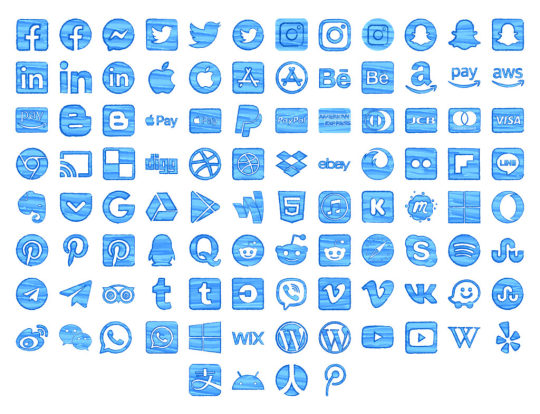
Image By MaxCompose
Use colors and fonts that reflect your brand
Your brand is what sets you apart from your competition. It's what customers remember about you, and it's what helps them decide whether to do business with you again. That's why it's important to use colors and fonts that reflect your brand. If your brand is fun and playful, use bright colors and fun fonts. If your brand is more professional, use neutral colors and classic fonts. Whatever you do, make sure the colors and fonts are consistent with the rest of your branding. Using the wrong colors or fonts can confuse customers and make them question whether they're dealing with the right company. So take the time to choose colors and fonts that reflect your brand personality, and watch your business grow!
Create a style guide for all branding materials
A style guide is a document that establishes and maintains a consistent look, feel, and voice for all branding materials. Creating a style guide is an important step in developing a unified brand identity. The style guide should be tailored to the specific needs of the organization and should include guidelines for fonts, colors, logos, and other design elements. It's also important to include guidelines for writing style and tone so that all communications from the organization are consistent and reflect the brand values.
Stand out from the competition online
In order to be successful in business, it is important to stand out from the competition. For small businesses, this can be a difficult task since there are so many other businesses competing for attention online. However, there are a few ways to set your business apart and make it stand out. One way to make your business stand out is by using an effective online marketing strategy. This could include creating a website that is well-designed and easy to use, using search engine optimization techniques to help your website rank higher in search results, and investing in paid advertising campaigns. Another way to make your business stand out is by offering unique products or services. If you can find a way to offer something that your competitors don’t, you’ll be more likely to attract customers. In order to stand out from the competition online, small businesses must create a unique and effective online presence. A website that is well-designed and user-friendly, along with a social media strategy that engages customers, can help small businesses stand out from the competition.
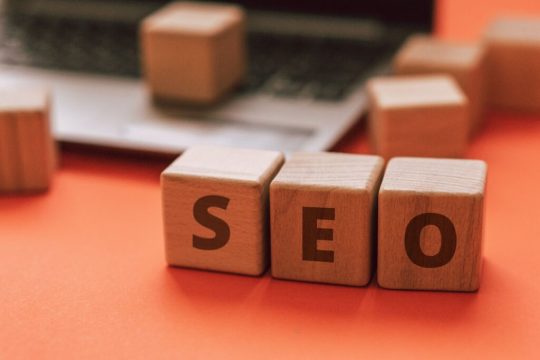
Photo by Oleksandr Pidvalnyi on Pexels.com Additionally, small businesses should make sure their website is search engine optimized so that it appears near the top of search engine results pages.
Implement and track your results for brand identity
In order to create a successful brand identity, it is important to first understand what that means for your business. Once you have a clear vision, you can begin to implement and track your results. Elements of strong brand identity include a consistent look and feel across all marketing materials, a clear and concise message, and an authentic voice. Implementing these elements takes time and effort, but the payoff can be worth it. Tracking the results of your branding efforts will help you determine whether or not they are working and make necessary adjustments along the way.
Conclusion
A well-designed brand identity should be unique, recognizable, and consistent across all marketing materials and communications. There are many different ways to create a strong brand identity, and the approach that works best for a particular business will vary depending on its specific needs. Some tips for creating a distinctive brand identity include using a memorable name, developing distinct values and beliefs, and creating visual imagery that is stylish and visually appealing. In conclusion, establishing a strong brand identity is important for any business. By following the tips mentioned in this article, you can create a brand that stands out from the competition and will be more successful in the long run. Read the full article
#Brand#BrandIdentity#brandstrategy#Business#BusinessandMarketing#competition#Logo#Marketing#Targetaudience
0 notes
Text
What is the process of graphic design?

What is the process of graphic design?
Graphic design is the process of creating visual communication that represents an idea, message, or product. The designers use a variety of tools and techniques to create the desired effect, including but not limited to art, layout, typography, and photography. Graphic design begins with an idea or concept and progresses through various stages including ideation, research, development, and production. During ideation, designers come up with ideas for products or concepts they may want to create graphics for. Designers will then research the market and the competition to determine the best possible design solution.
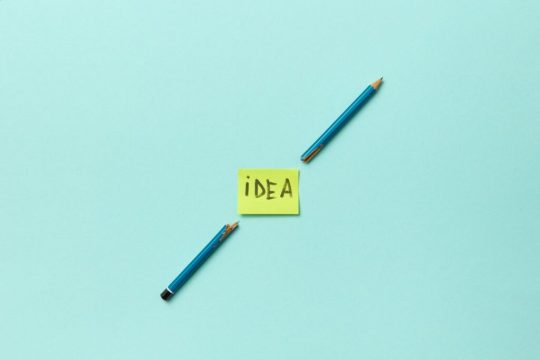
Photo by DS stories on Pexels.com Once a concept has been determined, designers will move on to developing visual solutions for their concepts by creating rough sketches or thumbnails. Once the first version is complete, designers will then create an image using a computer application. The final product can be a digital file or printed piece of art. Designers are often involved in the layout and composition of the final product as well. This is the overall standard procedure for all production-related, now let's go into detail with each step.
Graphic design is the process of visually communicating a message to a specific audience.
Designers use a series of steps to create a piece of art. The first step is to gather inspiration or planning. Next, the designer creates a sketch of the design. After that, the designer creates a prototype and style guide for the design. Finally, the designer makes any necessary changes and completes the project.
Planning: Graphic designers begin by planning the overall look and feel of the project.
Designers use various planning tools to help them create a cohesive and effective design. One popular tool is the mood board. A mood board is a collection of images, textures, and colors that help the designer get a feel for the project. This can be helpful in deciding on typography, layout, and overall aesthetics.

Photo by Andrea Piacquadio on Pexels.com When looking for inspiration, designers typically use magazines, websites, and even other designers. Graphic designers also use photography to help guide their work. This can be a big help when creating projects.
Sketching: Sketches help to plan the layout and composition of the project.
Sketching is a process of graphic design that can be used in many different ways. For example, when creating a new project, sketches can help to plan the layout and composition of the project. Additionally, sketches can also be used to communicate ideas with other people involved in the project. By using sketches as a way to communicate design ideas, everyone involved can have a better understanding of what is trying to be accomplished. Sketching can be confusing to some people who are new to the process. When first starting out, it can help to look at other sketches or design ideas from others, so that you can see how a sketch is used and how you should use your own sketches.
Creating a Style Guide: A style guide helps to maintain a consistent look throughout the project.
A style guide is a set of standards for the visual elements of a project. It can be used to create a consistent look throughout the project or to ensure that all team members are using the same fonts and colors. Style guides can be as simple or as detailed as you need them to be. They can include everything from font types and sizes to margin widths and spacing between paragraphs. When creating a style guide, it's important to think about your audience. If your project is for a client, you'll want to make sure that the style guide meets their specific requirements. If you're working on a website or app, you'll need to consider the different screen sizes and resolutions that people will be using. Once you've created your style guide, make sure everyone on your team is familiar with it.
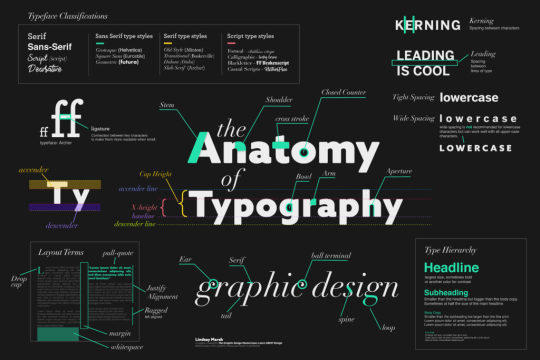
Image Provide By Lindsay Marsh Design
Typesetting: The text is set in place and formatted.
Typesetting is the process of arranging types to make a pleasing and readable layout. The text is set in place and formatted according to the designer's specifications. There are a number of factors that must be considered when typesettings, such as font choice, line spacing, and paragraph alignment. A skilled typesetter can create an attractive and cohesive layout that is easy to read. If you want to know more about typesetting or typography, please refer to another blog, "How to use Typography in Design Perfectly". This article will discuss more detailed typography and pairing principles.
Proofreading: Final adjustments are made before the project is complete.
Proofreading is the process of reviewing and editing written work to ensure accuracy, clarity, and consistency. This final step is important to produce a high-quality project. By catching errors early on in the writing process, they can be avoided. However, proofreading should not be done hastily; it takes time and careful attention to detail to identify all mistakes. It is sometimes overlooked, but it should not be underestimated.
Conclusion
In conclusion, graphic design is an important part of communication. It can be used to create a visual representation of an idea or message. Graphic designers use typography, color, and images to communicate with the viewer. Good graphic design can make a message clear and easy to understand. Poor graphic design can actually hinder communication by making the message confusing or hard to read. As graphic designers, it is our job to create designs that are both effective and appealing to our audience. Hope the process of the graphic design listed here can help you to create awesome artwork. Thank you for reading. Read the full article
#design#development#graphicdesigner#ideation#planning#ProcessofGraphicDesign#production#proofreading#research#sketching#styleguide#typesetting#Typography#VisualCommunication
0 notes
Text
What is a backlink and why do you need them?

What are the backlinks and why do you need them?
When you google a phrase, such as "backlinks for SEO" or "how to build backlinks?". The first few results almost always include articles about backlinks and how important they are for SEO. In this article, we're going to explain what a backlink is and why you need them. A backlink is a link from one website to another. Backlinks are important because they help your website rank higher in search engine results pages (SERPs).
Introduction: What is a backlink and what are they used for?
A backlink is an incoming hyperlink from one web page to another. Backlinks are often simply called links and are an important part of SEO (Search Engine Optimization). The number and quality of backlinks pointing to a website play a large role in how well that website will rank in search engine results pages (SERPs). In other words, backlinks are the bread and butter of SEO. They’re referred to as ‘back door links’ because they can help you get your website ranked higher on search engines.

Photo by PhotoMIX Company on Pexels.com
How do you get backlinks?
Getting backlinks is essential for any website looking to rank higher in search engines. We will discuss some of the best ways to get backlinks. First, you need to find high-quality (High DA-Domain Authority) websites that are relevant to your industry. Once you have gotten these websites, reach out to them and ask if they would be interested in linking to your website. Another great way to get backlinks is by creating valuable content that people will want to share. Make sure your content is original and interesting, and don’t be afraid to promote it on social media. Finally, remember that backlinks are not a one-time thing. You need to continue building them over time in order to see results. These are just a few of the best ways to get backlinks – there are many other methods available as well.

Photo by Jess Bailey Designs on Pexels.com Guest Post Guest posting can be an effective way to get backlinks. When done correctly, guest posting can help you build relationships with other bloggers in your industry, and it can also help you get your content in front of new audiences. Here are a few tips for guest posting: 1. Choose the right site. When choosing a site to submit a guest post, make sure that it is relevant to your industry and that it has a high Alexa rank. 2. Research the site. Before submitting a guest post, make sure to research the site and its audience. This will help you tailor your content to their needs. 3. Write a great headline. Your headline is one of the most important elements of your guest post - it's what will attract people's attention and encourage them to read more. 4. Write great content. Link it back to your website, or your blog post. Link Insertions These link insertions are a common SEO technique that can improve site ranking and organic search results. Inserting links into your website's content and backlinking to authoritative websites can help Google and other search engines better understand the topic of your website and boost your site's authority. While there are many ways to perform link insertions, the most effective method is to use a variety of relevant, high-quality links that are strategically placed throughout your website's content. When done correctly, link insertions can help improve your site's ranking and bring more visitors to your website. They are also known as backlinks, inbound links, and incoming links. In order for a link insertion to be effective, the site must have a high-ranking page to which the link is added. The site receiving the link will then see an improvement in its search engine ranking.

Photo by cottonbro on Pexels.com PBN (Private Blog Network) What is a PBN? A PBN, or private blog network, is a collection of websites owned by a single entity and provides links to one or more other websites. The purpose of a PBN is to improve the SEO (search engine optimization) of those other websites by increasing their domain authority and PageRank. Why use a PBN? There are many reasons why you might want to use a PBN. Perhaps you have a new website that you want to promote and you need some high-quality links to help it rank higher on Google. Or maybe you've been hit with a Google penalty and need to find a way to recover your lost rankings. A PBN can be an effective way to do both of these things.
Types of backlinks
There are many different types of backlinks that can be built. The most common are editorial links, which are links from articles that are editorially approved. These links carry a lot of weight with search engines and can help to improve your rankings. What is Editorial Link An editorial link is a backlink from a website that is not a part of your site's link profile. Editorial links are typically earned through quality content and are seen as a stamp of approval from the website linking to you. They are also valuable because they pass more link equity than other types of links.

Photo by Damien Lusson on Pexels.com Other types of backlinks include: 1. Links from other websites in your industry or niche. One great way to get links to your website is by having other websites in your industry or niche link to you. This can be done in a variety of ways, such as including a link to your website in their blogroll, mentioning you in a blog post, or even linking to specific articles on your website. If you have a quality website with valuable content, other websites will be happy to link to you. In fact, many webmasters are always on the lookout for good websites to link to, so it may be worth reaching out to them and asking if they’d be interested in linking to you. By acquiring links from other websites, you can not only increase traffic to your website but also improve your search engine rankings. 2. Links from authority websites in your industry or niche. Links from authority websites in your industry or niche are some of the most valuable links you can get. Not only do they help you to rank higher in search engines, but they also help to legitimize your website and increase your credibility with potential customers. To find authority websites in your industry or niche, simply do a Google search for "top websites" or "top blogs." These websites will likely have high-quality content, a large audience, and high domain authority. Once you get a few authority websites in your industry or niche, reach out to them and ask if they may interested in linking to your website. Be sure to include a compelling reason why they should link to you, such as citing your high-quality content or providing valuable information that their audience would appreciate. 3. Links from websites with high PageRank values. Links from websites with high PageRank values are considered more valuable by Google than links from websites with lower PageRank values. A website's PageRank value is determined by Google using a variety of factors, including the number and quality of links to the website from other websites. 4. Links from websites with high Domain Authority values. Domain Authority (DA) is a website metric created by Moz that predicts how well a website will rank on search engines. It is calculated using a variety of factors, including linking root domains, number of links, and MozRank. A high Domain Authority value means that a website is likely to rank well on search engines. Links from websites with high Domain Authority values can help your website rank higher on search engines. In addition, having links from high-quality websites can also help improve your website's credibility and authority. Therefore, it is important to seek out links from websites with high Domain Authority values. 5. Links from social media sites such as Facebook, Twitter, and LinkedIn. As social media sites continue to grow in popularity, businesses are finding new and innovative ways to use them to their advantage. One way businesses are using social media sites is by creating links between their websites and their social media sites. These links allow customers to easily navigate between the two and can help increase traffic to both the website and the social media site. In addition, businesses can use social media sites to create links to other websites, such as online stores or blogs. This can help promote these other websites and drive traffic to them. By linking their social media sites with their website and other websites, businesses can improve their online presence and reach more potential customers. As of 2012, there were over 2.4 billion active social media users, and that number is only expected to grow. This means that if you're not using social media to market your business, you're missing out on a huge opportunity. Not only are social media sites a great way to connect with customers but they use to drive traffic to your website.
Conclusion
In today's online world, it's more important than ever to have a strong web presence. In order to ensure your website is seen by as many people as possible, you need to build backlinks. Backlinks are links from other websites that point back to your site. They are a major factor in how high your website will rank in search engine results pages (SERPs). There are a number of ways to build backlinks, but the most effective way is to create high-quality content that others will want to link to. You can also submit your website to directories and social media sites, participate in guest posting and blog commenting, and use other marketing techniques to generate backlinks. In conclusion, backlinks are an important part of SEO because they help to improve a website's ranking in search engine results pages. They also help to increase traffic to a website, which can result in more sales or customers. Backlinks are therefore a valuable asset for any business that wants to improve its online visibility. Read the full article
0 notes
Text
How to design using a special grid system?
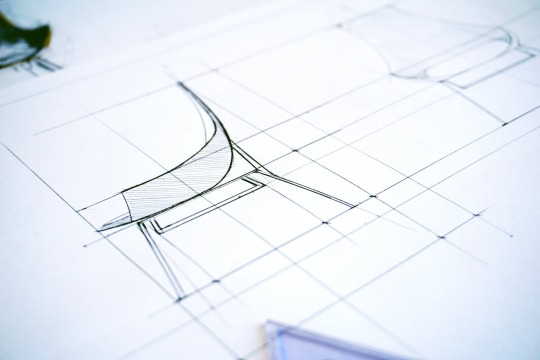
How to create amazing designs using a special grid system!
Creating amazing designs using a special grid system can be a challenging but fun process. By following a few simple tips, you can create layouts that are both innovative and visually appealing. First, it's important to consider the purpose of your design. Do you want to create a simple document or poster? Or do you want to create something more complex, such as a photo collage? Once you know the goal, you can begin creating your grid. Designing layouts with grids is a common technique for creating an organized and visually pleasing design. In the last article, we already discuss the different types of grids, and where to use them. If you miss it, please refer back to this article "How do the grid and layout help your design?". And now let's get start it.
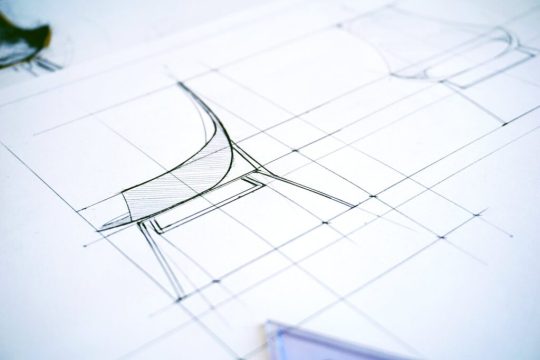
Photo by Karol D on Pexels.com
Composite Grids Using Modular and Column Grids
Develop your layout before pictures or text is placed by using grid lines. This is called Blocking. This gives you a procedure for conflict resolution and a rationale for each element's placement. It also allows you to determine what elements are more important while ignoring other elements, where you can place photos or final text, and at what point you may need to start searching for a photograph. Column grids are used to create a symmetrical layout, while modular grids allow for more flexibility in design. When used correctly, both of these grid types can help you to create pages that are easy to navigate and visually pleasing.
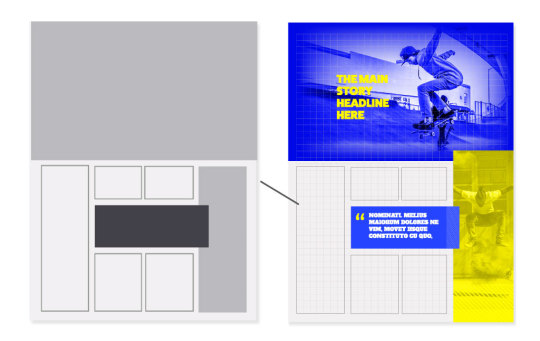
Image By Lindsay Marsh Design
Isometric Grids
An isometric grid system is a type of grid that is used in creating three-dimensional drawings. It is made up of evenly spaced horizontal and vertical lines that intersect at right angles. This type of grid can be helpful when creating designs that need to be viewed from different angles, as it gives a more accurate representation of the object's shape. Axonometric projections, also called isometric grids, are tools that are used to represent 3D objects on 2D surfaces. They can be used effectively by engineers who want to create maps, blueprints, and drawings, and enable them to see planes or levels similarly. They're also suitable for displaying information. Isometric grids have become popular in design for design purposes as well as for illustration and product mockups. How Isometric Grids are constructed Isometric grids are easy to make. They consist of equal-spaced vertical lines. You can use copy these same lines and then rotate them by 60 degrees so that the first intersecting series of lines is formed. Lastly, duplicate the first 60 degrees line set and rotate it 60 degrees in the same direction to form the third set of intersecting lines. All of these 3 lines make up the isometric grid you see image background below. I also provide a brief description of the highlight & shadow, Isometric direction, color choice, and depth & height.

Image By Lindsay Marsh Design
Icon Grid System
Almost any interface can be improved with the judicious use of icons. Icons make an interface more intuitive by providing visual cues to the user about what actions are possible. They also help to keep the interface consistent by using shared symbols throughout the application. We're going to take a look at some common icon grids and how you can use them in your own designs. A grid has been created that helps an icon be properly aligned and balanced. Using the grid available in the icon set can help you create the icons that are intended to look coherently arranged. The spacing between circles and lines is relative to the Golden Ratio.

Image By Lindsay Marsh Design
Diagonal Grids
A diagonal grid is a great way to add interest and movement to your quilt blocks. This type of grid can also help you to create more complex blocks with ease. It's very easy to make a diagonal grid for your quilt blocks.
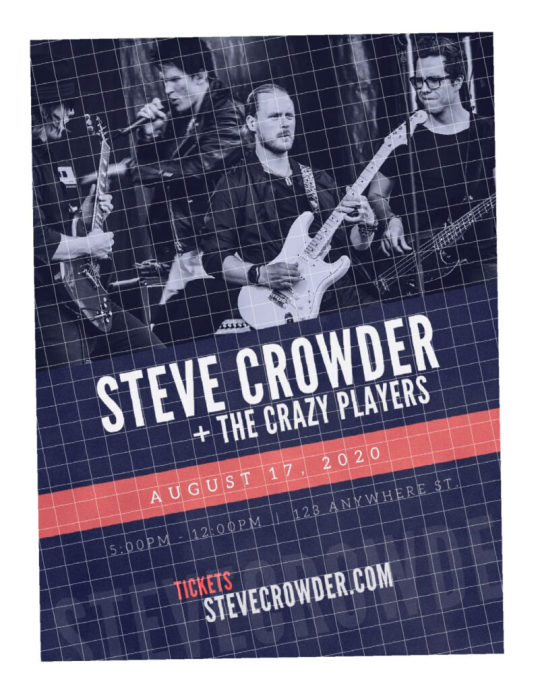
Image By Lindsay Marsh Design
Using Grids for Social Media
This grid is a modular structure where the margins are arranged. I am utilizing the grid not just to determine the elements of where to insert them but to frame parts of the elements, like in the focal point of the logo or the facial area of an individual. We already know that finding the right balance is critical to everything that we do. It's equally important to have equally weighted sides to the face and popsicles, as they're often in close proximity to one another and tend to work in concert to achieve a single focus.
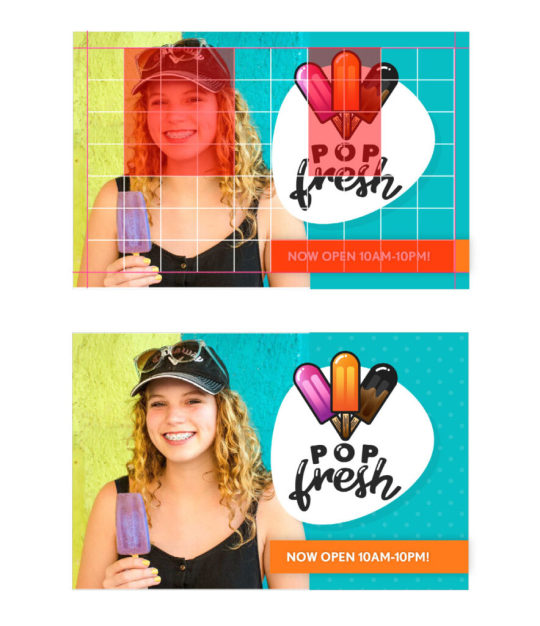
Image By Lindsay Marsh Design
Grid System in Logo Design
Grids are simple, geometric shapes that can be used to create orderly designs. They can be used to create a sense of balance and symmetry in a logo and can make it more visually appealing. Grids are also versatile and can be used in a variety of different ways. Spacing is important between components of the logo as well as the spacing recommended for the space outside of that logo.
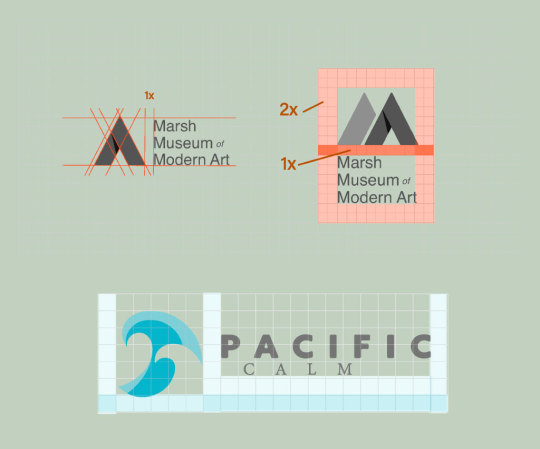
Image By Lindsay Marsh Design
Grids for Web and Desktop Layout
Grids are an important tool for creating web layouts. They help to create a unified design and make it easy to align content. In addition, grids can be used to create fluid or fixed layouts. A classic 12-column grid layout with a left gutter appears near the top of the following image. This is seen in nearly all desktop and website designs.
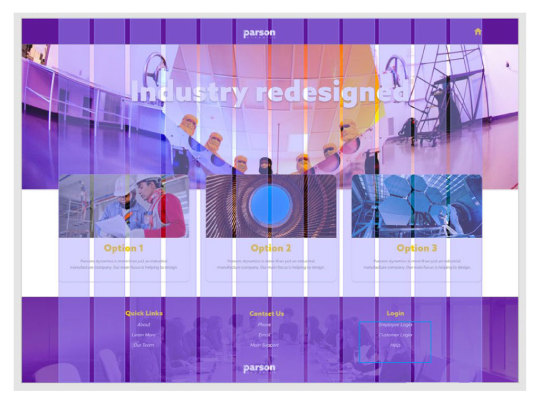
Image By Lindsay Marsh Design
Grids for Mobile Layout
A common grid system of 4 columns guides the design of mobile user interfaces. These columns may therefore help guide the placement of buttons, photos, and other design elements. They often help you understand elements with various columns like the example here. The ends of the buttons line up with the info above the right hand.
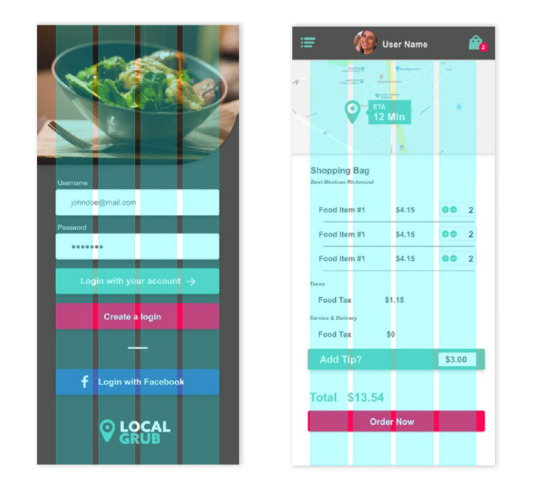
Image By Lindsay Marsh Design
Grids in Editorial Layout
The Grid system is a valuable tool for setting up the overall look and feel of an editorial layout. They provide a structure for arranging type and images, as well as guiding the reader's eye around the page. Grids can be simple or complex, depending on the design needs of the project. It's very efficient when creating editorial layouts and distributing information because they keep both sides of a spread in balance and provide an even distance between the gutters. In recent years, grids have become less rigid, with more flexible column widths and modular layouts. This allows for greater creativity and flexibility in page design.
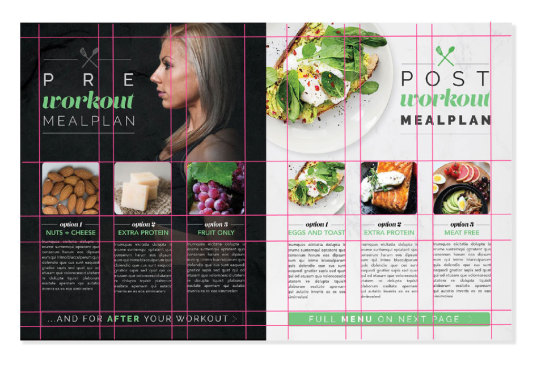
Image By Lindsay Marsh Design
Conclusion
In conclusion, by using a grid system, you can create amazing designs that are both visually appealing and organized. This grid system is easy to use and can be applied to a variety of projects. So why not give it a try? You may be surprised at how simple and effective it can be! Read the full article
#CompositeGrids#desktoplayout#DiagonalGrids#EditorialLayout#graphicdesign#gridandlayout#gridsystem#gridssystem#IconGridSystem#IsometricGrids#layouts#MobileLayout#specialgridsystem#UsingGrids
0 notes
Text
How do the grid and layout help your design?

How do the grid and layout help your design?
Layout and grid design can help you organize your content, create a clear hierarchy, and improve user experience. They can also help you avoid overcrowding and keep your design looking professional. The layout is especially important for web pages and graphic design, as users will spend most of their time on them. A well-designed layout will help users quickly find what they're looking for while avoiding confusion and ensuring all content is easily legible. Grid design can help create a sense of order and symmetry in your page layouts. They ensure each topic is consistent throughout the document.

Photo by Sebastian on Pexels.com
Introduction: How grid and layout help your design
Grids and layouts help your design by creating a foundation that is both visually appealing and easy to navigate. By using a grid, you can control the placement of each element on the page, creating a cohesive design that is simple to understand. Additionally, the well-organized layout can improve readability and help your viewers find the information they need quickly and easily. A grid layout is a design technique that uses horizontal and vertical guides to create an organized, logical and aesthetically pleasing layout. In this tutorial, you will learn how to use grids in your designs. We will explore many different types of grid layouts and discover the benefits they can bring to your work.
Basic Grid Terminology
A grid is a foundational design principle that can apply to any design project. Grids are created by evenly spacing out columns and rows of content on a page. This creates a clean, orderly layout that makes it easy for users to scan and understand the content. There are several different types of grids that can use, each with its own advantages and disadvantages. In this section, we'll review some basic grid terminology so you can choose the right grid for your project.
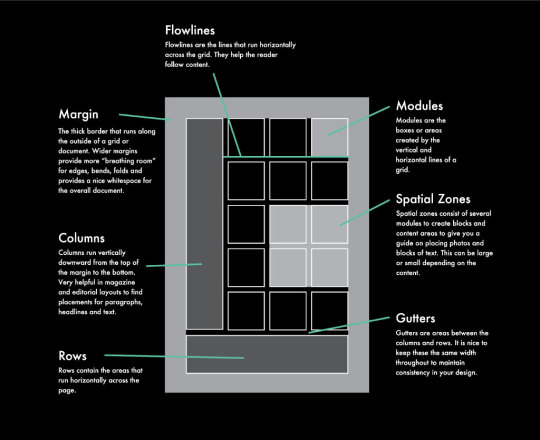
Image By Lindsay Marsh Design Manuscript Grids This grid is good for writing books and for positioning text from left to right. Grid layouts comprise a single center block that divides the page and creates a clear margin, text area, header, and footer. This basic arrangement is the default for any word processing document.
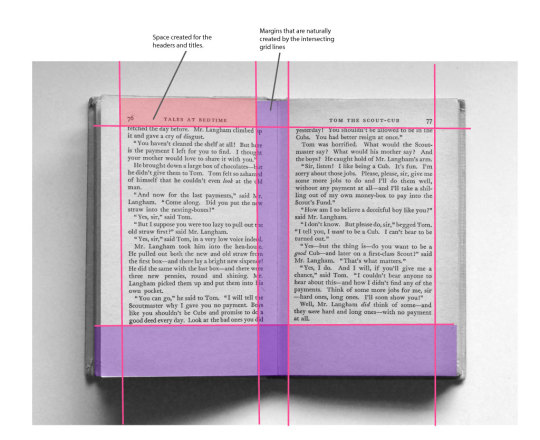
Image By Lindsay Marsh Design Column Grids It's perfect for use in magazine pictures, spreads, and others that have a large mix of text, photos, and quotes. Column grid templates allow you to divide up the textual content and photos. Those maybe 2, 3, 4, or 12 columns based on the complexity of the layout and design. Column grids are an essential part of web design. They provide a solid foundation for your website and make it easy for users to navigate. A large amount of white space and colored text help guide the reader's eyes throughout the page and disperse information regarding the event.

Image By Lindsay Marsh Design Modular Grids A modular grid is made up of horizontal and vertical modules that can be combined in different ways to create a variety of layouts. This makes it ideal for designing web pages, as well as print documents and posters. It can also use to create custom grids for specific projects. Its consists of a variety of modules that can be set up for any type of graphic style, photo, or design element. They are perfect for ads, book covers, billboards, and other interiors requiring a great degree of flexibility. They are also ideal for catalogs that can be organized and spaced according to each item. The best way to learn how to use a modular grid is to experiment with it. Play around with the different modules, and see how they can be combined to create different layouts.
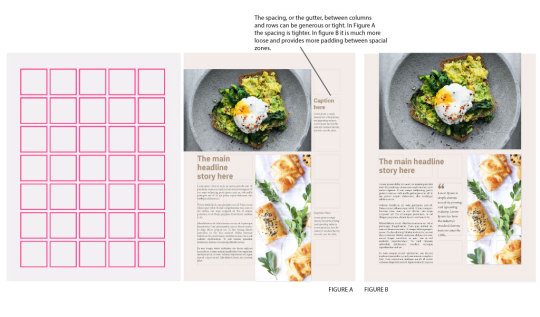
Image By Lindsay Marsh Design Hierarchical Grids Hierarchical grids are made up of a series of nested grids, which can be adjusted to create the perfect layout for your page. For example, if you want a page to look like a magazine spread, then you can use the grid to create the layout. You can also move around different parts of the page according to where it will be placed in the magazine or book. "Hierarchy" is from the Greek language meaning "superior", " ranked", or "order". These partitions follow an order of importance, with the most vital things larger at the top, and the least vital things farther down. A grid such as this one would be a great fit for a website design or mobile app layout in which the most important items should display higher than usual.
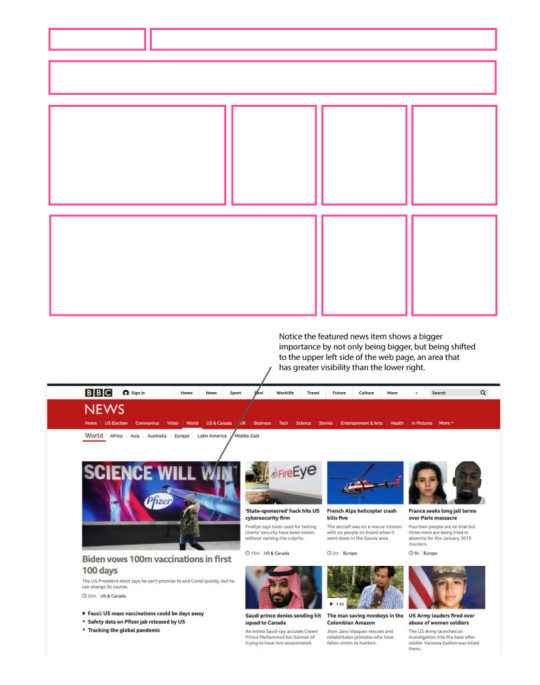
Image By Lindsay Marsh Design
Establish a hierarchy for design
Grids help to establish a hierarchy for design, which in turn, creates a visual order. By using a grid as a foundation, designers can control the placement of elements on the page and create a more harmonious overall design. Grids also make it easier for the viewer to understand how the different parts of the design work together.
Use whitespace to create balance
Grids are a great way to use whitespace to create balance in your designs. They can be simple or more complex, but the basic idea is that you establish a set number of columns and rows. And then evenly space out your content within those constraints. This can be a great way to make sure everything in your layout is neatly aligned and looks polished. Use grids to create a more uniform appearance for your designs. Grids can also use in print design to create a more uniform, structured look. This is especially useful at the beginning of the design process. When you are trying to decide on a layout and place your elements on the page.

Photo by rizky nan on Pexels.com
Use Grids to Create a visual rhythm
Grids are a great way to create a visual rhythm in your designs. They provide a structure for your layout and help to keep your elements in order. When used correctly, grids can make your design look clean and polished. Eliminate "white space" between elements White space is the empty space between your element. If you want to get rid of this, you can use grids. Grids are a great way to keep your design looking visually interesting and organized.
Conclusion
The grid and layout are the most important aspects of any design. A well-crafted layout can make a website look sleek and professional, while a poorly-designed layout can make a site look confusing and cluttered. In this article, we’re going to explore how grid and layout help to create a visually appealing design. Grid layouts are popular for a reason: they work well on both desktop and mobile devices. By using grids, you can ensure that your content is evenly distributed across each page, leading to a more organized and user-friendly experience. We have explained the meaning of grids in this article, as well as how to use them to make your design rock-solid. Please stay tuned to the following article for more information about how to combine all grids and make your design perfect. Read the full article
#designgrid#designer#graphicdesign#graphicdesigngrid#grid#gridandlayout#grids#pagelayout#webdesignlayout
0 notes
